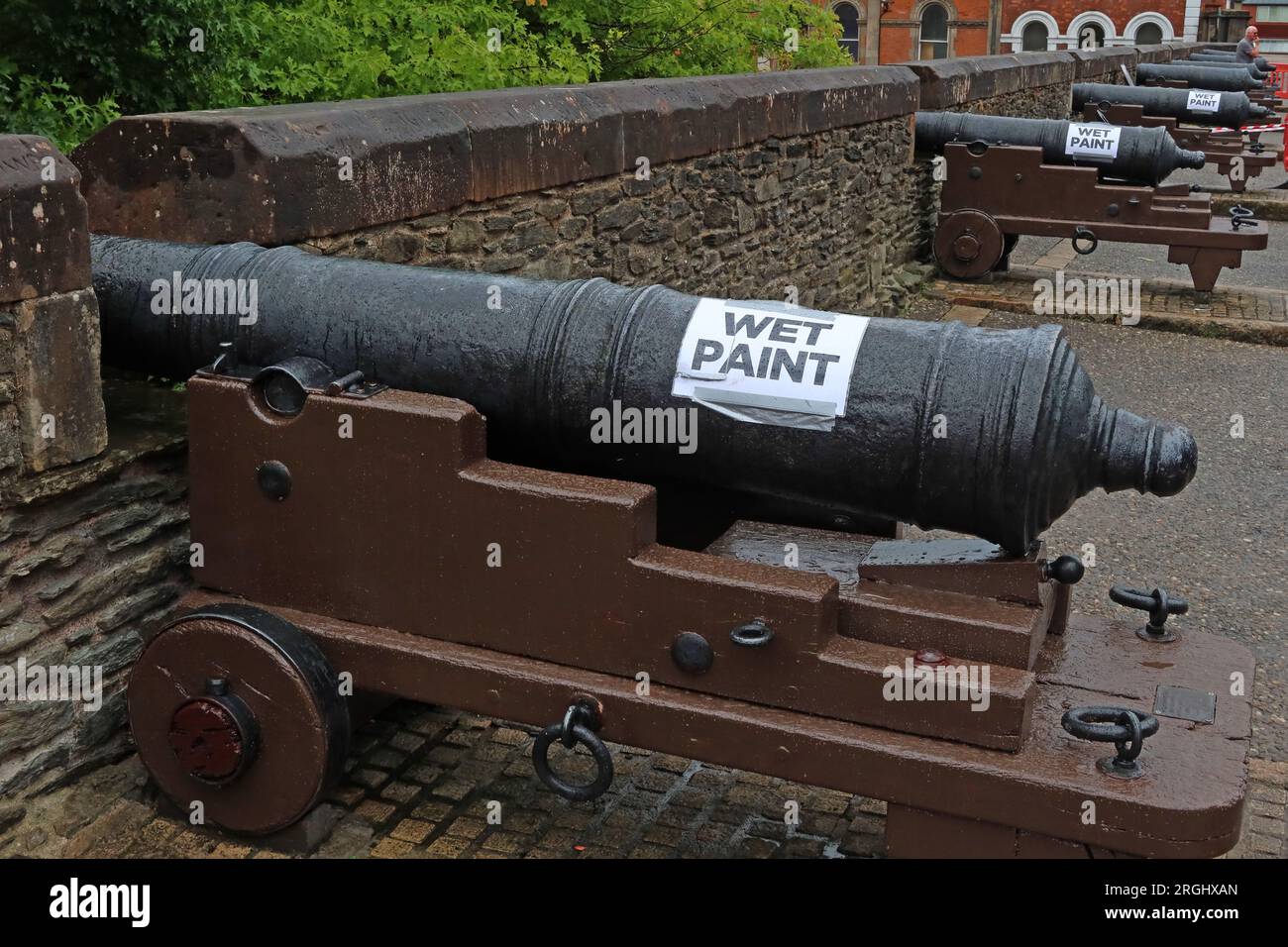Wet paint, repainting historic Cannons on the Londonderry walls, pointing out from the city, County Derry, Northern Ireland, UK, BT48 6PJ

Image details
Contributor:
Tony Smith / Alamy Stock PhotoImage ID:
2RGHXANFile size:
57.1 MB (2.5 MB Compressed download)Releases:
Model - no | Property - noDo I need a release?Dimensions:
5472 x 3648 px | 46.3 x 30.9 cm | 18.2 x 12.2 inches | 300dpiDate taken:
20 June 2023Location:
Londonderry / Derry walls, County Derry, Northern Ireland, UK, BT48 6PJMore information:
Derry's walls were originally built by the Irish Society between 1613 and 1619, under the supervision of the London builder and architect Peter Benson. They were built with the intention of protecting the Scottish and English planters that had moved to Ulster as part of the Plantation of Ulster that had been established by James I. It was a direct consequence of the previous settlement being destroyed by Irish chieftain Cahir O'Doherty during O'Doherty's rebellion. As a result of the building of the city's defences by the Irish Society, which was a consortium of livery companies based out of the City of London, the city was officially renamed Londonderry in the 1613 royal charter. This is what has subsequently led to the naming dispute for the city and county of Derry/Londonderry. The walls are at the centre of the historic city of Derry and within them are a number of Derry's most important landmarks including the Apprentice Boy's Hall and St. Columb's Cathedral (the first ever purpose-built Protestant Cathedral). The walls are lined with 22 cannons from the 16th, 17th and 18th centuries, other cannons can be found displayed elsewhere in the city. Derry boasts the largest collection of cannons whose precise origins are known, with many of them being used during the Siege of Derry. In 2005, 24 of the cannons (including two displayed at Brook Hall) were restored to their former glory, with the famous 'Roaring Meg' located at the double bastion near Bishop gate The fact that the city's walls have never been breached gave rise to one of its nicknames; the Maiden City.